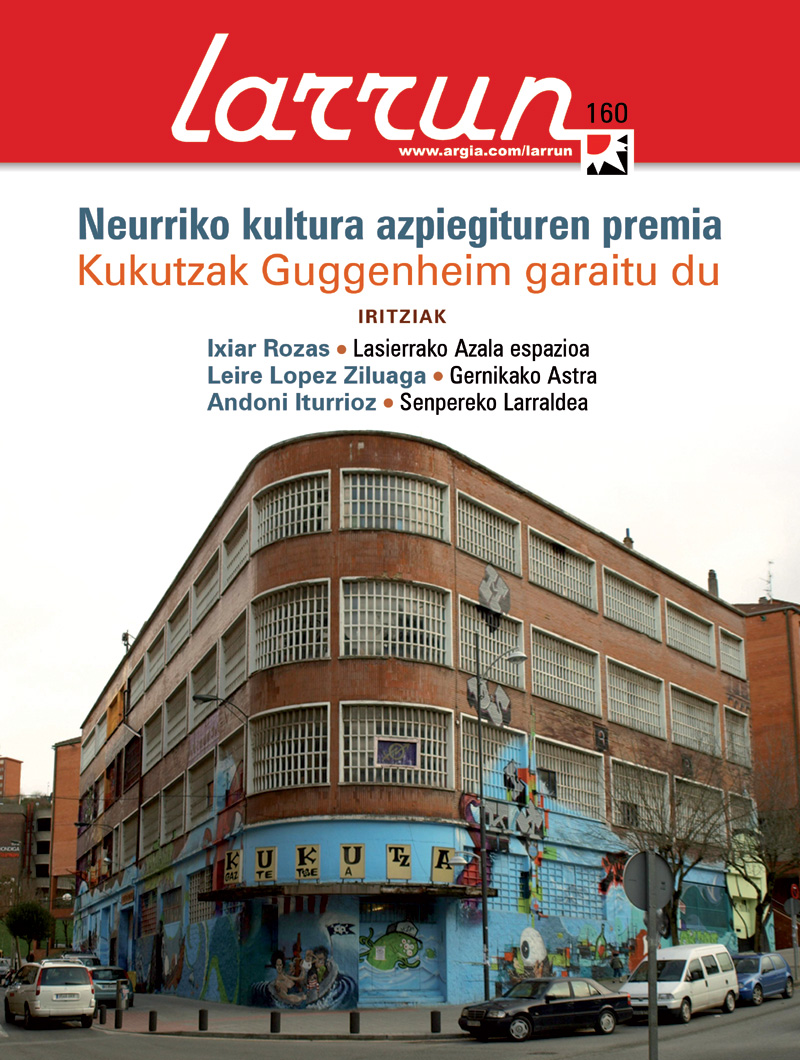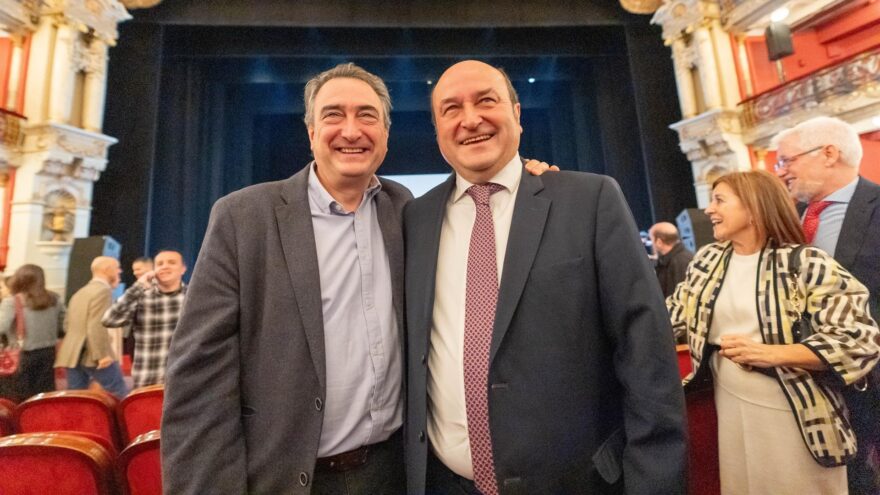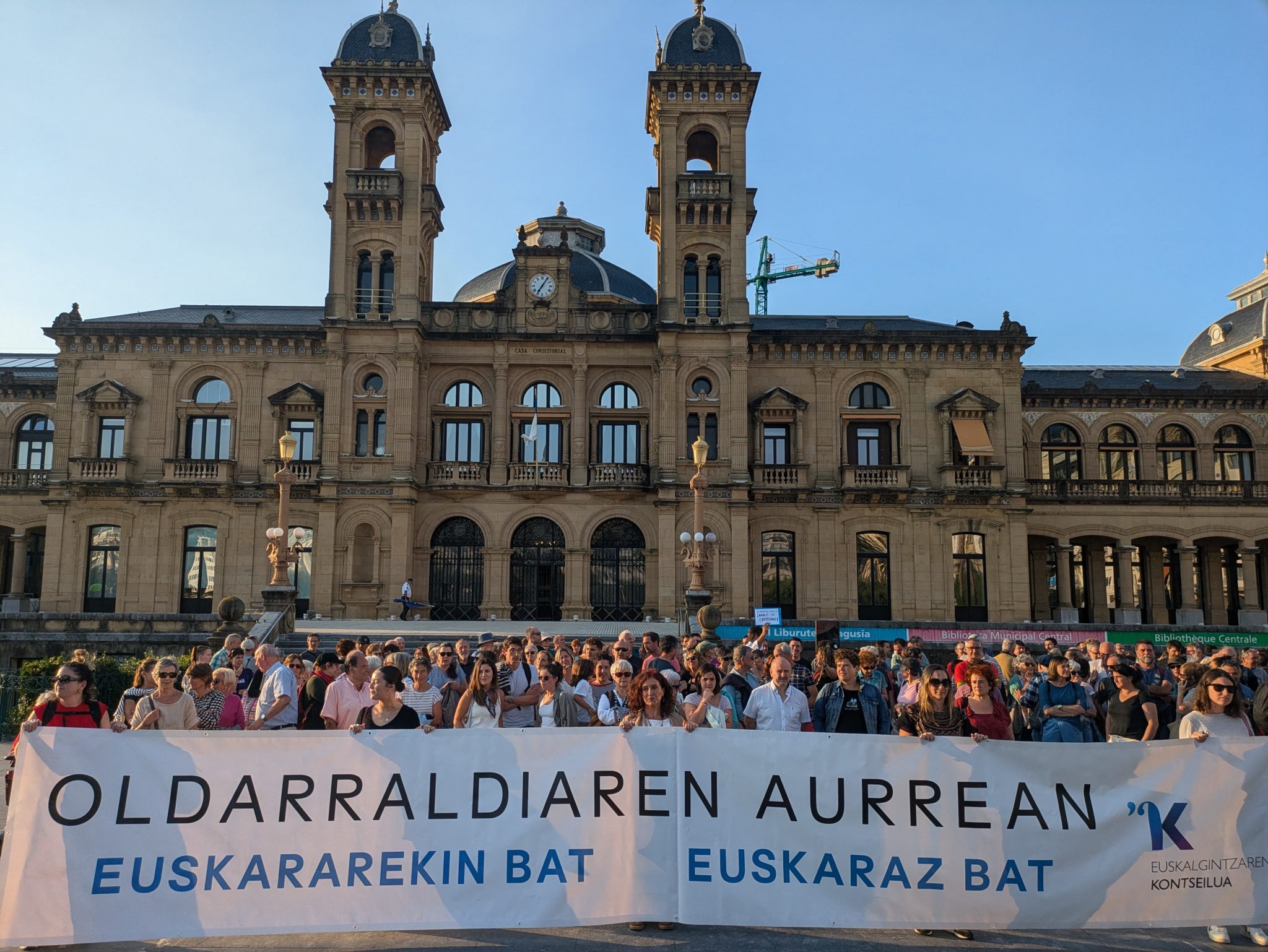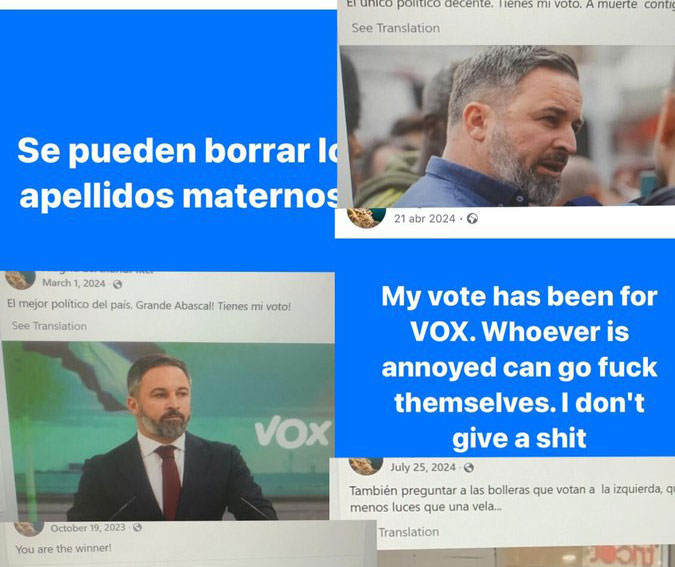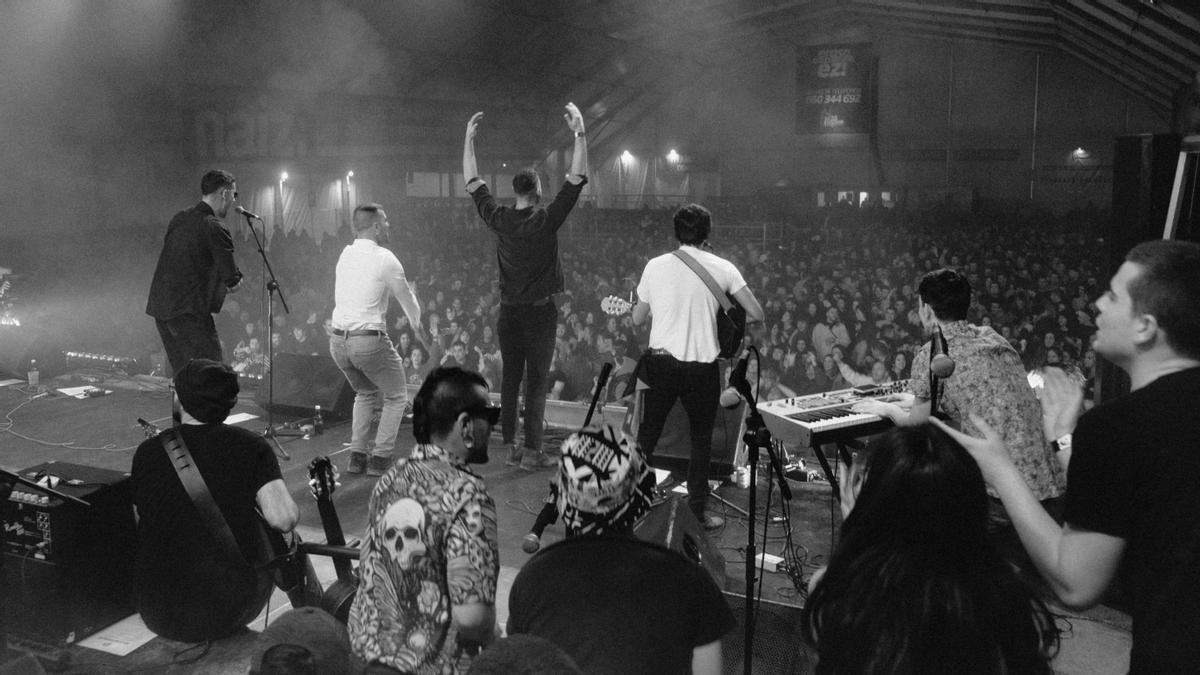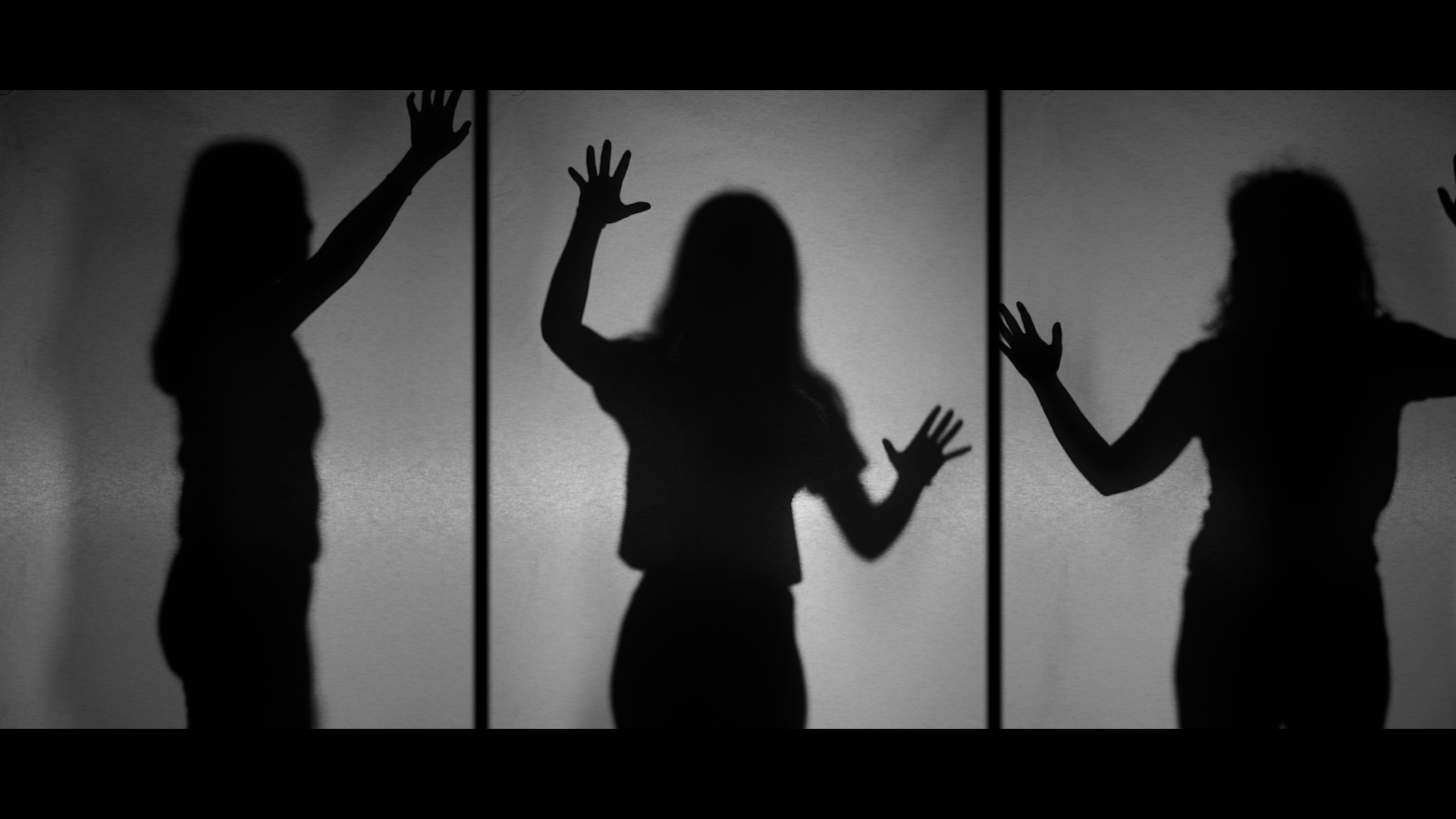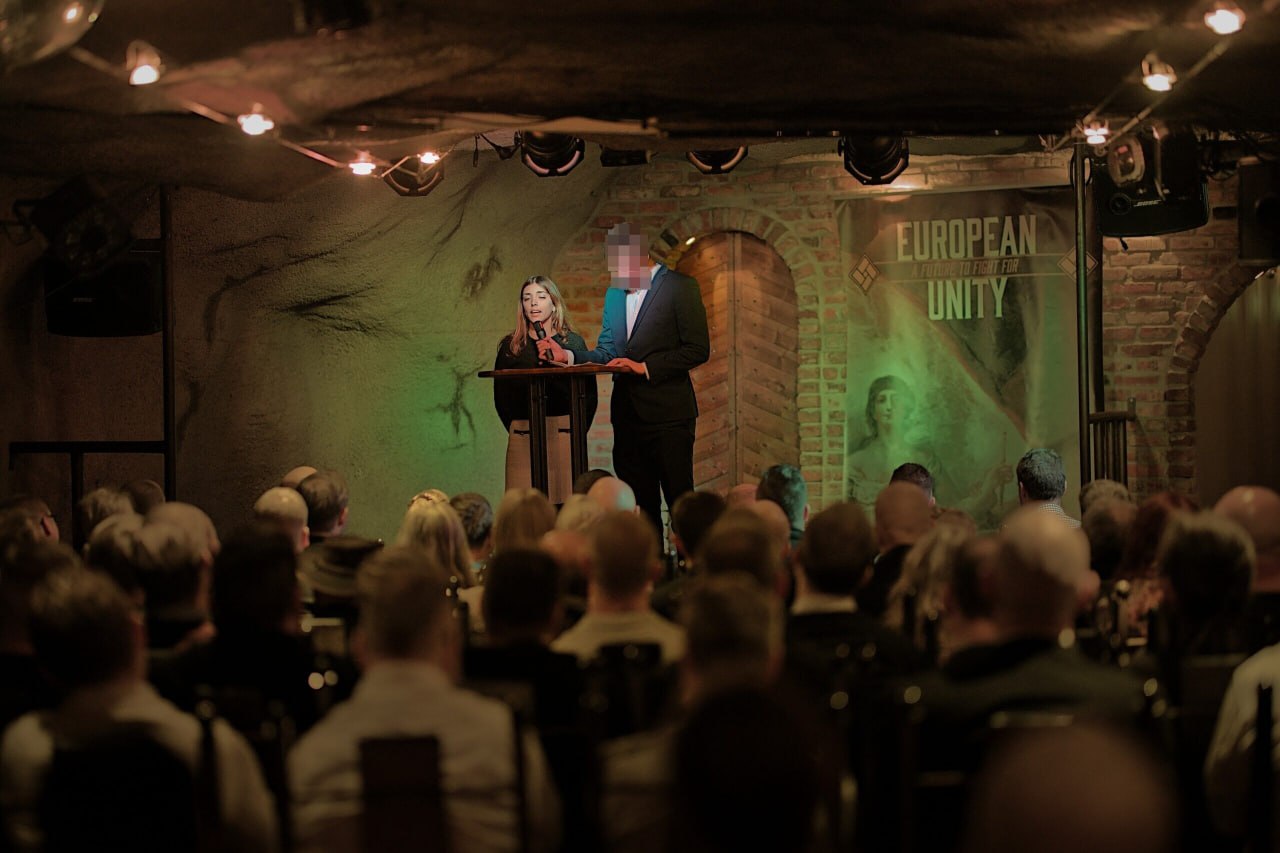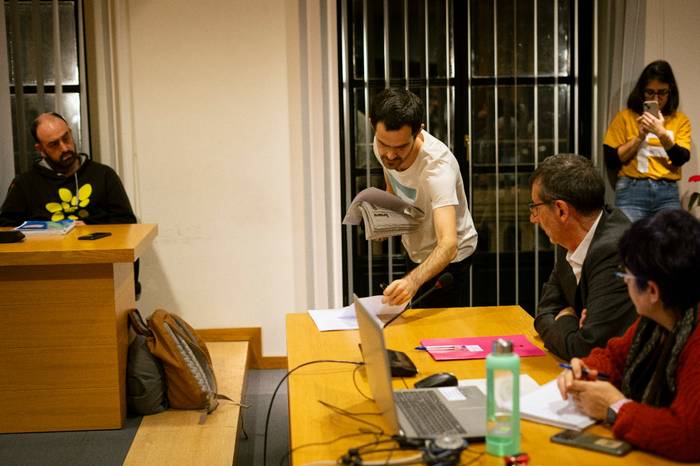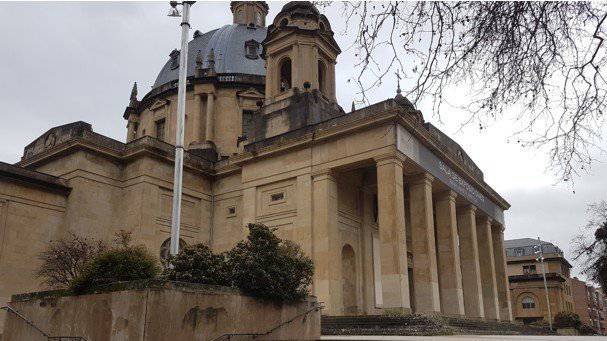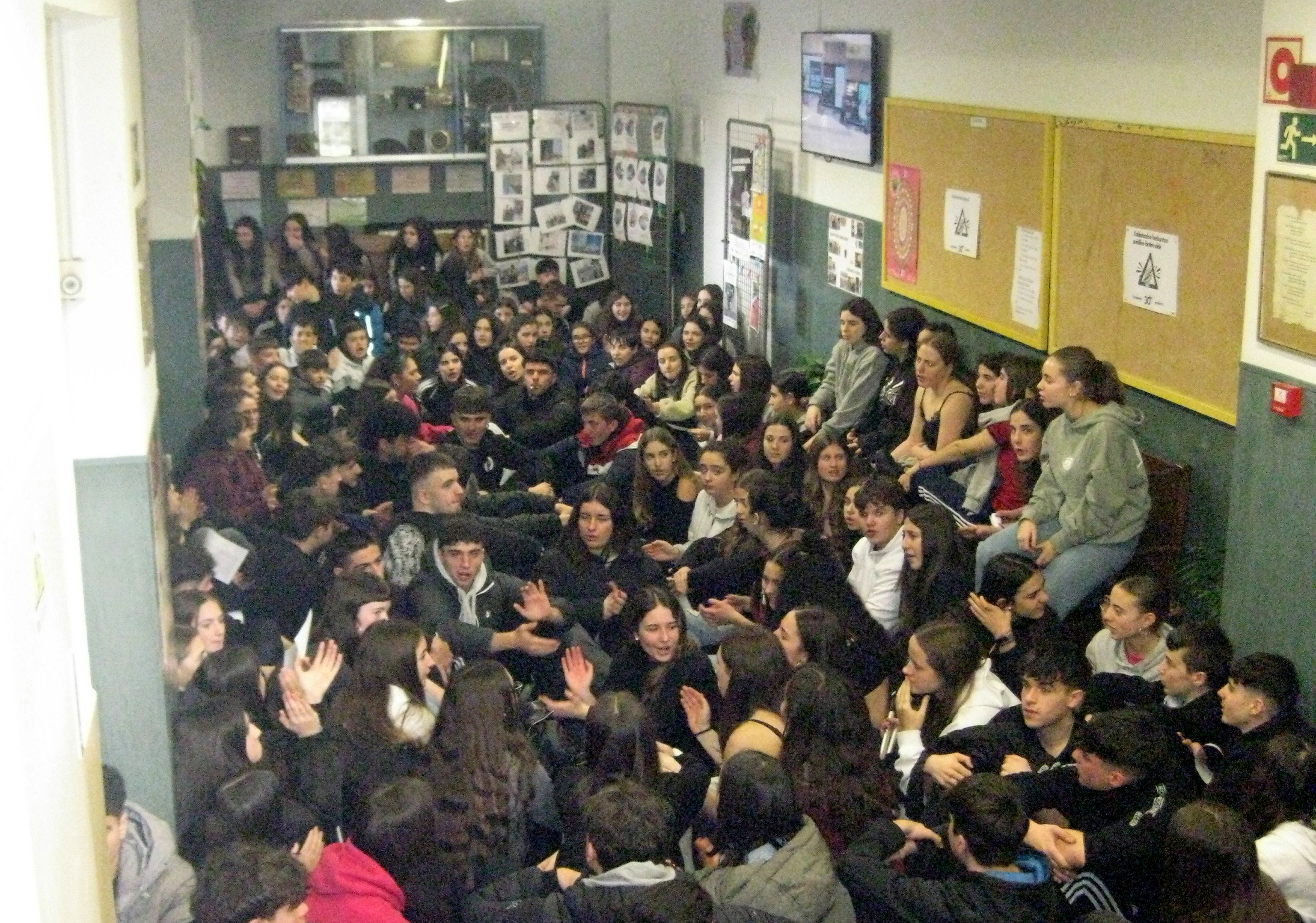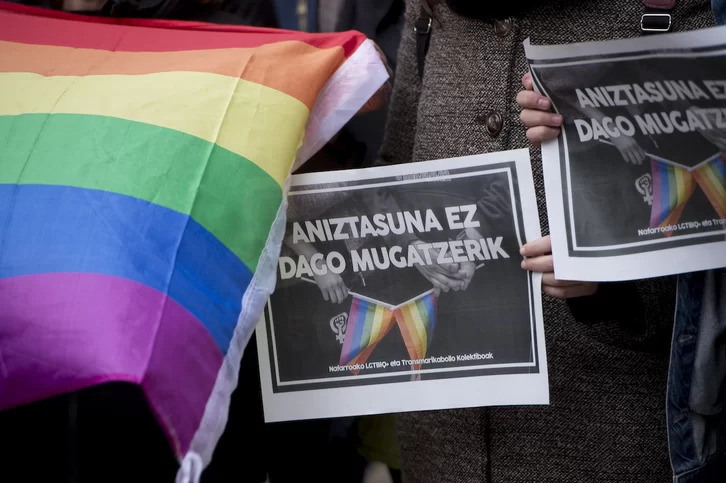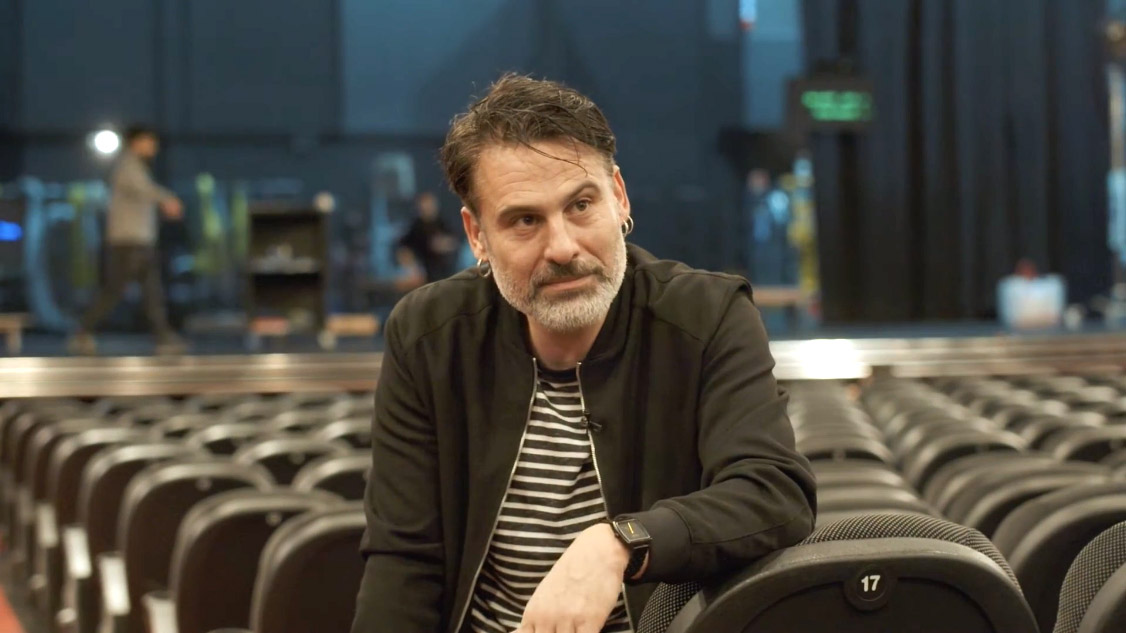Surfaces. About the realization of the experience
(1)
A wish. The Azala space starts from a desire. Idoia Zabaleta and Juan González have for a long time a desire to dream: they want to build a space for artists, creators and thinkers in the field, where they live, in the village of Lasierra (Álava), that is in contact with the local and the foreign, that offers artists, creators and thinkers an adequate space of work and research and quality time. How can we reconcile this dream with economic sustainability? A possible answer: to create a mixed model, which is a space for creation, on the one hand, and agrotourism on the other. With the answer and tools in hand, construction works are launched in February 2008 and in December 2008 the first artist hosts the residence Azala: Zoukak Group, Beirut.
Since then, Azala is a viciferous space, because it has two heads, both in its nature and in its management. In other words, it combines two spaces – creation space and tourist accommodation – with two economic models of private management – public aid for the former and revenue from tourism for the latter.
Next we will talk about the space of creation, since we believe that it is Azala’s main contribution to the cultural map of Euskal Herria and abroad. As an explanation, it should be pointed out that although the epicenters of the creative space are dance, the performing arts and the practices based on the body, its expansive wave travels with naturalness and promiscuity other artistic disciplines, such as performative arts, the arts of the body, denominations such as the living arts and other areas of knowledge.
(2)
A proposal. Let’s go beyond disciplines and think more “extra-traditional” (1). The skin is extra-curricular, since artistic practice and thought converge in the headquarters, workshops, laboratories and seminars that take place in it. Not only because artistic practice in itself can be a means of research, but also because the activities organized from Azala include anthropology, philosophy, political sciences or sociology.
So let us move in interstices and connections between disciplines. Desire can put the structures to dance, desire is transformative, because it seeks more connections. Desire produces the unconscious. As an example: when we are dealing with a work of creation there is always a nebula, an undetermined space, the road is unknown when we are at the starting point. That is why desire is an important factor in an open process: because desire unites those two places of beginning and end. Desire is the strength of what you don't know.
(3)
Experience. “We have more information and less experience,” Benjamin said. Only the narration of our own experience gives us the opportunity to know it. By telling the subjective (experience) we give it to ourselves through the common (language). (…) Infinite research is made, (…) is a process that has no end. It never closes (…),” wrote poet José Luis Gallero (2) after the Narrative Socianalysis seminar led by Renato Curcio and Nicola Valentino in Azala. Pedro G. Romero (3), upon learning of the existence of St. Vitors in the church of Lasierra, continues searching in the shrine to feed his rich file. Inazio Escudero reminded us how boring it is to always be right when he sang Reason at the Festival of Azala and Miryam Van Imschoot told us that history can be a phone call (4).
Many and varied artists, thinkers, agents and activists have taken Azala on its short journey since it opened its doors. If we start looking for a kind of bond, there are two words: experience. We can say that they have made experience, that they have given us the opportunity to make experience. How to understand the phrase of the experience from the current perspective? For a long time Benjamin announced the poverty of the experience, precisely in the years of war (5). We have more and more information, but experiences happen outside of our lives, and we look at them. But making experience can be going beyond where you are, moving around where you were.
(4)
Create affections. Maite Arroitajauregi closed his career in September 2011 in the church of Lasierra. In a heretic concert he offered songs created during his stay in Azala. On one occasion, a recipe to bottle the tomato to a woman from the village of Lasierra. On the other, he drove through the altar to Santa Águeda, San Sebastian and the San Vitores himself, singing Martires (6). The performance journey was a kind of mist: we went and returned.
In addition to creating the appropriate conditions for the processes of research and creation, the Cover aims to generate spatial times of autonomy and freedom from experimentation, exchange, practice and critical reflection, producing knowledge. The last phrases are already a common vocabulary of museums, centres or spaces of contemporary art. But what do these Azala words mean? By saying that contexts of knowledge occur, we are also talking about affections. From the point of view of management, although the skin has the disadvantages of a small space – to mention a few small working groups and scarce resources – it therefore has the advantage that the closeness that can be achieved in the organisation of activities allows for the implementation of complicity. The body is what it can do, and we can conceive affections as the power of the body, the movements that occur in it, even if they are kept quiet, can occur in a body.
Affections are not personal or individual and have nothing to do with only emotions and feelings, but can be the possibility and ability to connect affections with others. Assaulted, create contexts where we can influence, produce.
(5)
Mycorrhizae. Understanding cooperation projects as symbiotic processes. For example, mycorrhizae: “Mikorriza is the association that is created when the roots of a plant and the hyphae of the fungi come together. In this partnership, the substances that each needs are exchanged. (…) It is possible that the same fungus generates mycorrhiza with more than one plant and that through the mycelium a connection is generated between different plants, different trees, (…), as well as between scrubs,” wrote Isabel de Naverán (7). Mycorrhizae are like walks and mists that move around without knowing how far the expansive wave of the epicenter can go.
Vagina Shadow(iko)
Group: The Mud Flowers.
The actors: Araitz Katarain, Janire Arrizabalaga and Izaro Bilbao.
Directed by: by Iraitz Lizarraga.
When: February 2nd.
In which: In the Usurbil Fire Room.









